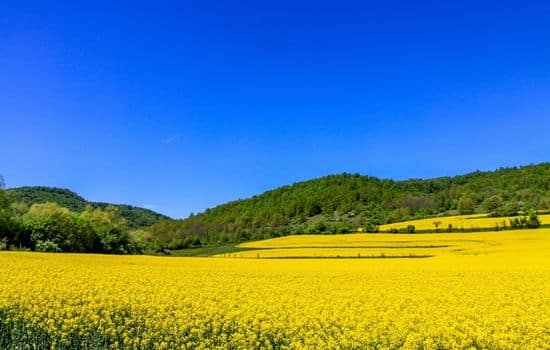Advertisements
Bulgaria is an example in forest management, which seeks to have less impact on nature, avoiding waste of natural resources and having less impact on fauna and flora.
In addition to planning the harvest and monitoring forest growth, ensuring indefinite timber production and the maintenance of nature.
Advertisements
Bulgaria is located in Eastern Europe, in the Balkans. Its territorial extension is 111 thousand km², bathed, to the east, by the Black Sea.
SEE ALSO
PANTANAL, NATURAL HERITAGE AND WORLD BIOSPHERE RESERVE
Advertisements
THE MOST BEAUTIFUL FORESTS IN THE WORLD
BEES AND THEIR ECOLOGICAL IMPORTANCE
Main Features of Bulgaria
The climate
Predominant climate: Temperate, greatly influenced by altitude and the Black and Mediterranean seas.
Its main characteristics are hot, dry summers and harsh winters with higher precipitation rates, with snowfall records throughout the country.
See Also:
The average annual temperature is 10.5 °C, on the other hand, maximum temperatures can exceed 40 °C and minimum temperatures fall below zero.
The North is drier than the South, so rainfall accumulates between 450 mm and 1190 mm in these regions respectively.
The relief
Bulgaria has a relief composed of mountain ranges, plains and depressions.
Highlights include the Danube River in the north, and the Balkan mountain range, which also runs through the lands to the west and southwest.
The central portion is formed by plains, starting near the capital, and depressions, while the southern part has a mountainous relief.
Its highest point stands out, situated 2925 meters above sea level: Mount Musala, located in the southwest of the country.
Vegetation of Bulgaria
The influence of the temperate climate and mountainous relief formed the tundra vegetation cover in the highest areas, steppes and Mediterranean forest to the south.
Hydrographic Network
The Danube, despite running through the interior of Bulgarian territory, is one of the main rivers in the region and on the European continent.
The country's largest river is the Maritsa, which is 480 km long. The country's river network is made up of many lakes.
Forest management practices
Forests cover more than a third of its land area, making it one of the most biodiverse spots in Europe.
They are home to brown bears, lynxes and wolves, hundreds of species of birds, and a wide variety of trees: beeches, pines, firs and oaks.
The country has a tradition of forest management practices, with large-scale monitoring programs in place.
Local communities monitor the natural environment. These factors have enabled national authorities to make the most of their biodiversity.
Bulgaria sells 90% of the annual herb harvest as raw material to Germany, Italy, France and the United States.
Sustainable projects have made Bulgaria a model for everyone
The sustainable use of non-timber forest products has made the country a model for other Balkan nations.
The country has received $335.3 million in funding from the European Union over the past 12 years for conservation projects.
The Ministry of Environment and Water carried out for national and natural parks, municipalities and non-profit organizations.
The resources allowed the country to expand its environmental programs and ensure that its forest resources continued to be used in a sustainable manner.
Monitoring is necessary to maintain sustainability
However, Miroslav Kalugerov, director of the Bulgarian Nature Protection Service, knows that receiving money for environmental protection does not necessarily lead to success.
He argues that while access to comprehensive information is vital to the good management of any natural resource, it is only a first step towards environmental solutions.
“Without data, nature conservation is chaotic, objectives may not be met and conservation of non-timber forest products is impossible,” says Miroslav.
Forests are home to incredible wildlife
Bulgaria has large, untouched forests and mountain ranges, making it a great home for wild animals.
Currently, it is estimated that there are between 2 and 3,000 wolves and around 400 to 700 brown bears in the country.
The efforts of activists have ensured that the bears are protected and saved from extinction.
Unfortunately, wolves are not fully protected, as there are still no laws prohibiting hunting.
There are also many foxes and wild rabbits.
To help you get to know one of Bulgaria's beautiful national parks, below I'll tell you about a very special one.

Pirin National Park, World Heritage Site
He is a national park from the Bulgaria, with an area of 274 km², altitude of 1,008 to 2,914 meters, between the Pirin Mountains.
It was created in November 8th of 1962 and in the year of 1983 recognized as UNESCO World Heritage Site.
Two nature reserves are located within the boundaries of Pirin National Park: Bayuvi Dupki – Dzhindzhiritsa and Yulen.
It has 118 glacial lakes, the largest and deepest of which is Lake Popovo.
It also has glaciers and forests cover 57.3% of the parks' area and almost 95% are coniferous forests, the so-called taiga.
They have pine, cedar and fir trees, with an average age of 85 years.
The Baikushev pine, the oldest tree in Bulgaria, is located in the park.
With a diverse fauna, the park has 45 species of mammals, 159 species of birds, 11 species of reptiles, 8 species of amphibians and 6 species of fish.
In short: A paradise on our planet.
